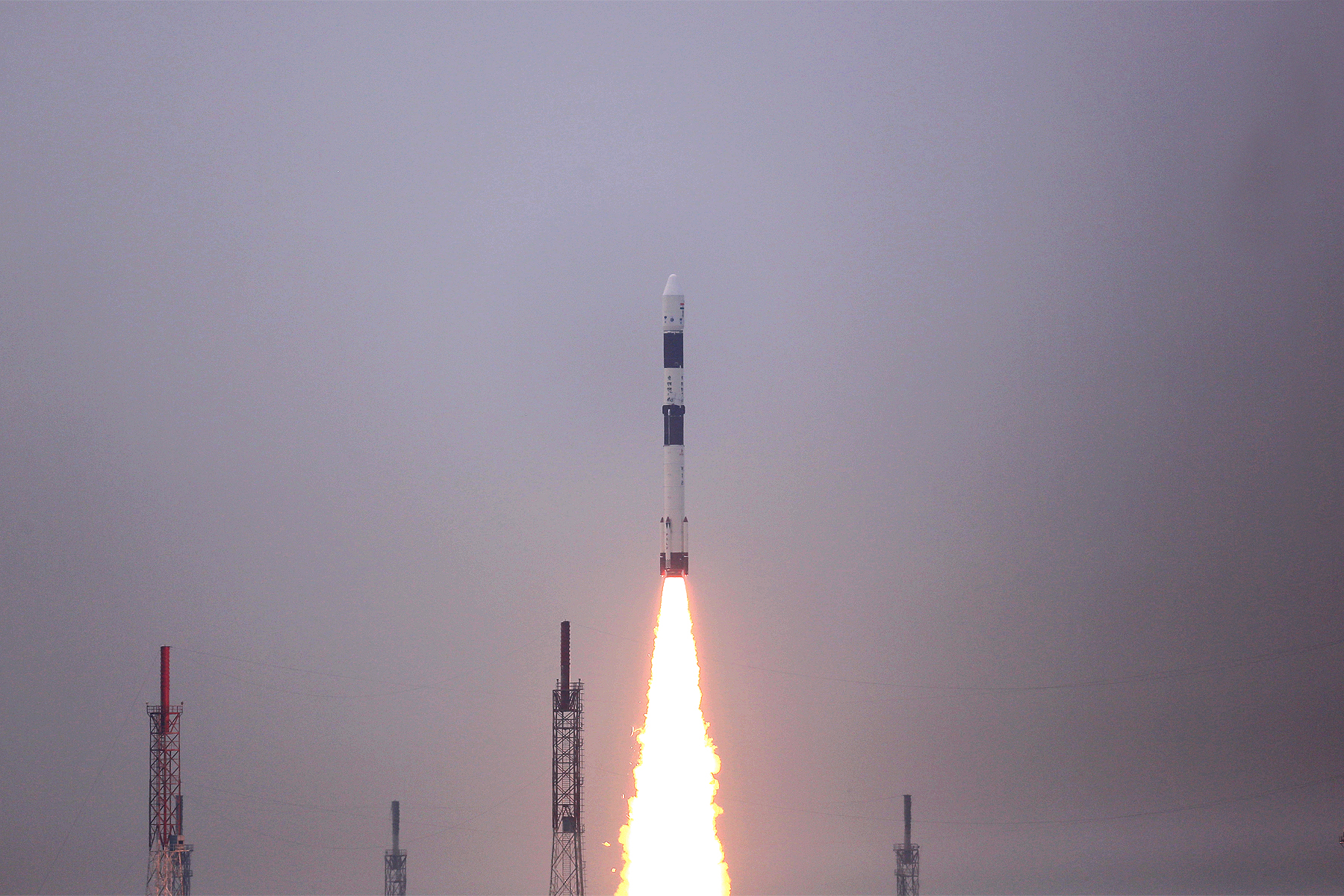An Indian rocket successfully lofted 31 satellites to Earth orbit late Wednesday night (Nov. 28), just a few days before the scheduled liftoff of a SpaceX booster that's even more jam-packed.
The Polar Satellite Launch Vehicle (PSLV) launched from Satish Dhawan Space Centre, on India's southeast coast, at 11:27 p.m. EST (0427 GMT and 0957 local Indian time on Nov. 29).
The PSLV's primary payload was the 840-lb. (380 kilograms) HySIS satellite, whose main goal "is to study the Earth's surface in the visible, near-infrared and shortwave-infrared regions of the electromagnetic spectrum," officials with the Indian Space Research Organisation (ISRO) wrote in a statement after the successful launch. [See amazing launch photos for India's HySIS mission]

Also aboard the PSLV were 29 nanosatellites and one microsatellite, which were provided by eight different countries. All of these little spacecraft reached their intended orbits, ISRO officials said.
This phalanx included 16 "Dove" Earth-observing cubesats built by San Francisco-based company Planet and two shoebox-size "Pioneer spacecraft." The Pioneers are owned by the company Spire Global but were developed under the European Space Agency's ARTES (Advanced Research in Telecommunications Systems) Pioneer program.
The twin Pioneers will test the ability of tiny spacecraft to perform "radio occultation" science, European Space Agency officials said. This work consists of measuring how satellite signals are refracted by Earth's atmosphere, information that can in turn help characterize the atmosphere, potentially aiding weather and climate forecasts.
The PSLV launch serves as something of a prelude for the upcoming SSO-A: SmallSat Express mission, which is scheduled to lift off atop a SpaceX Falcon 9 rocket on Sunday (Dec. 2). The two-stage Falcon 9 will carry to orbit 64 small satellites, including one that contains a bust of Robert H. Lawrence Jr., the first African-American astronaut.
Get the Space.com Newsletter
Breaking space news, the latest updates on rocket launches, skywatching events and more!
SSO-A will also mark the first time that a Falcon 9 first stage has launched on three separate orbital missions. This first stage also helped loft Bangladesh's Bangabandhu-1 communications satellite in May and the Merah Putih satellite for PT Telkom Indonesia in August.
Sixty-four satellites is a lot, but it won't set the record: A PSLV launched 104 spacecraft to orbit back in February 2017.
Mike Wall's book about the search for alien life, "Out There" (Grand Central Publishing, 2018; illustrated by Karl Tate) is out now. Follow him on Twitter @michaeldwall. Follow us @Spacedotcomor Facebook. Originally published on Space.com.
Join our Space Forums to keep talking space on the latest missions, night sky and more! And if you have a news tip, correction or comment, let us know at: community@space.com.

Michael Wall is a Senior Space Writer with Space.com and joined the team in 2010. He primarily covers exoplanets, spaceflight and military space, but has been known to dabble in the space art beat. His book about the search for alien life, "Out There," was published on Nov. 13, 2018. Before becoming a science writer, Michael worked as a herpetologist and wildlife biologist. He has a Ph.D. in evolutionary biology from the University of Sydney, Australia, a bachelor's degree from the University of Arizona, and a graduate certificate in science writing from the University of California, Santa Cruz. To find out what his latest project is, you can follow Michael on Twitter.









